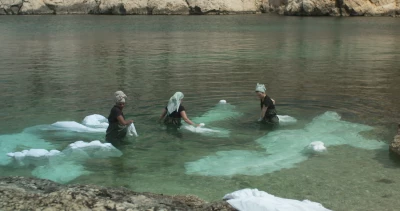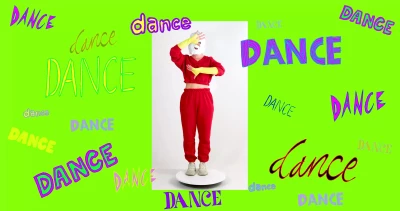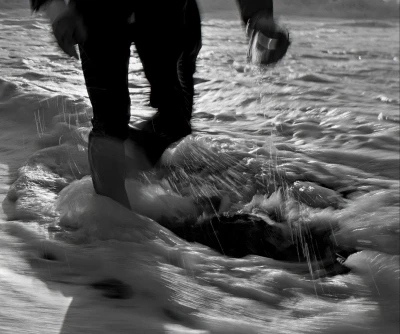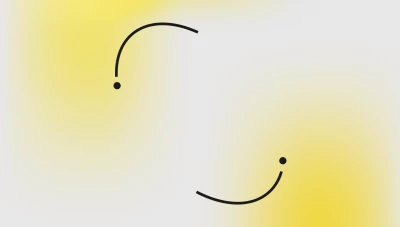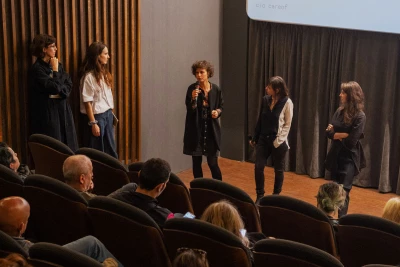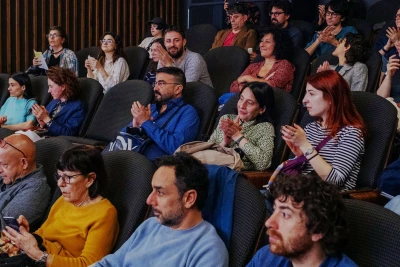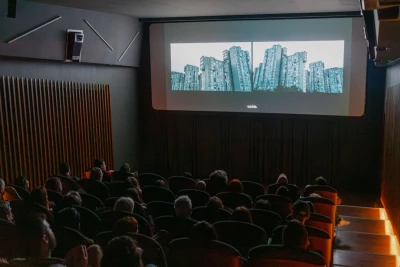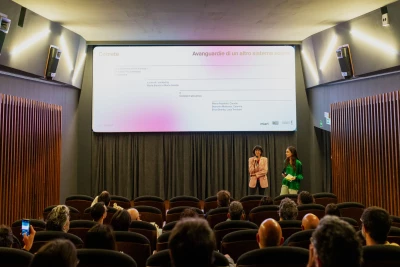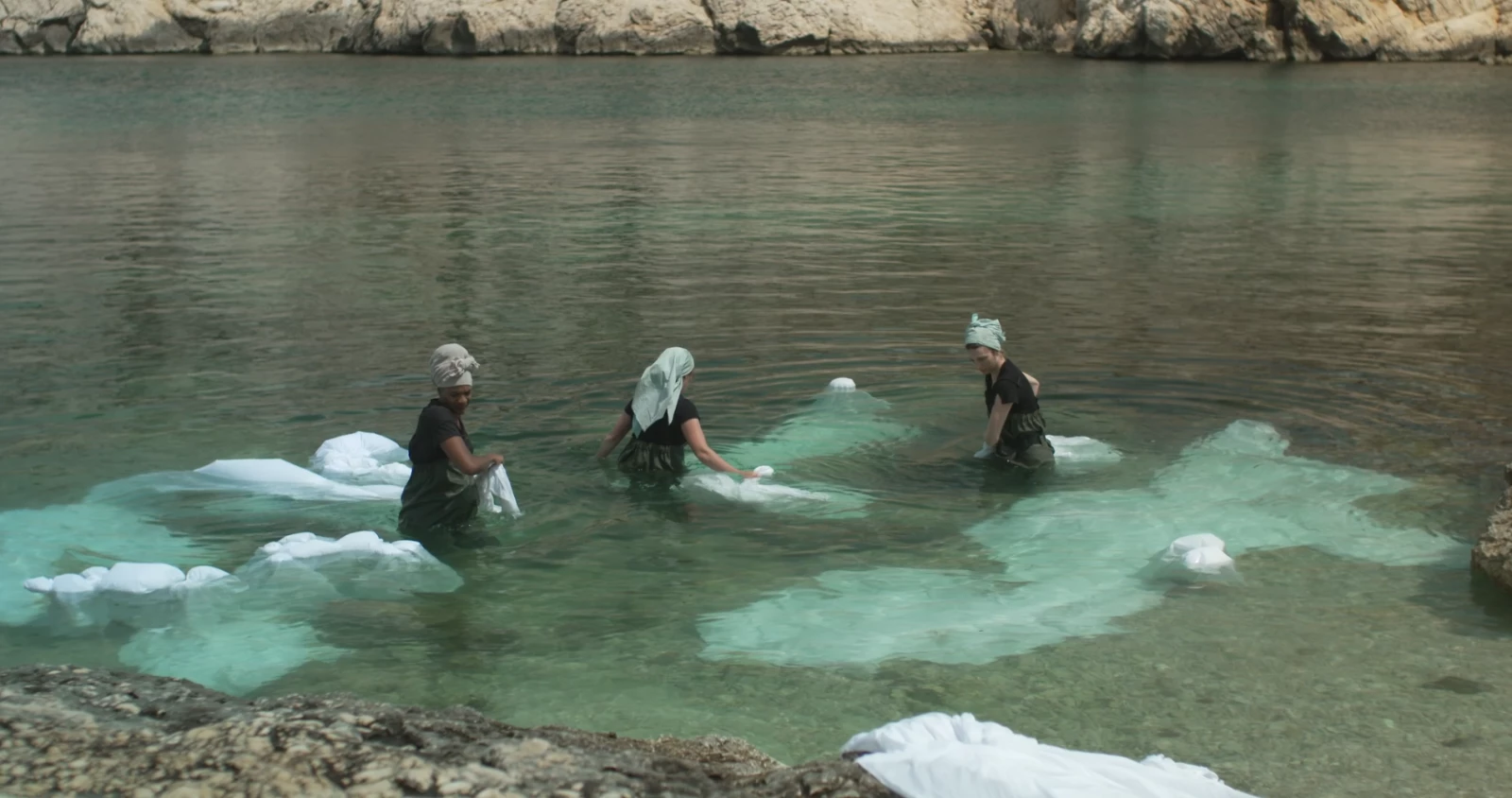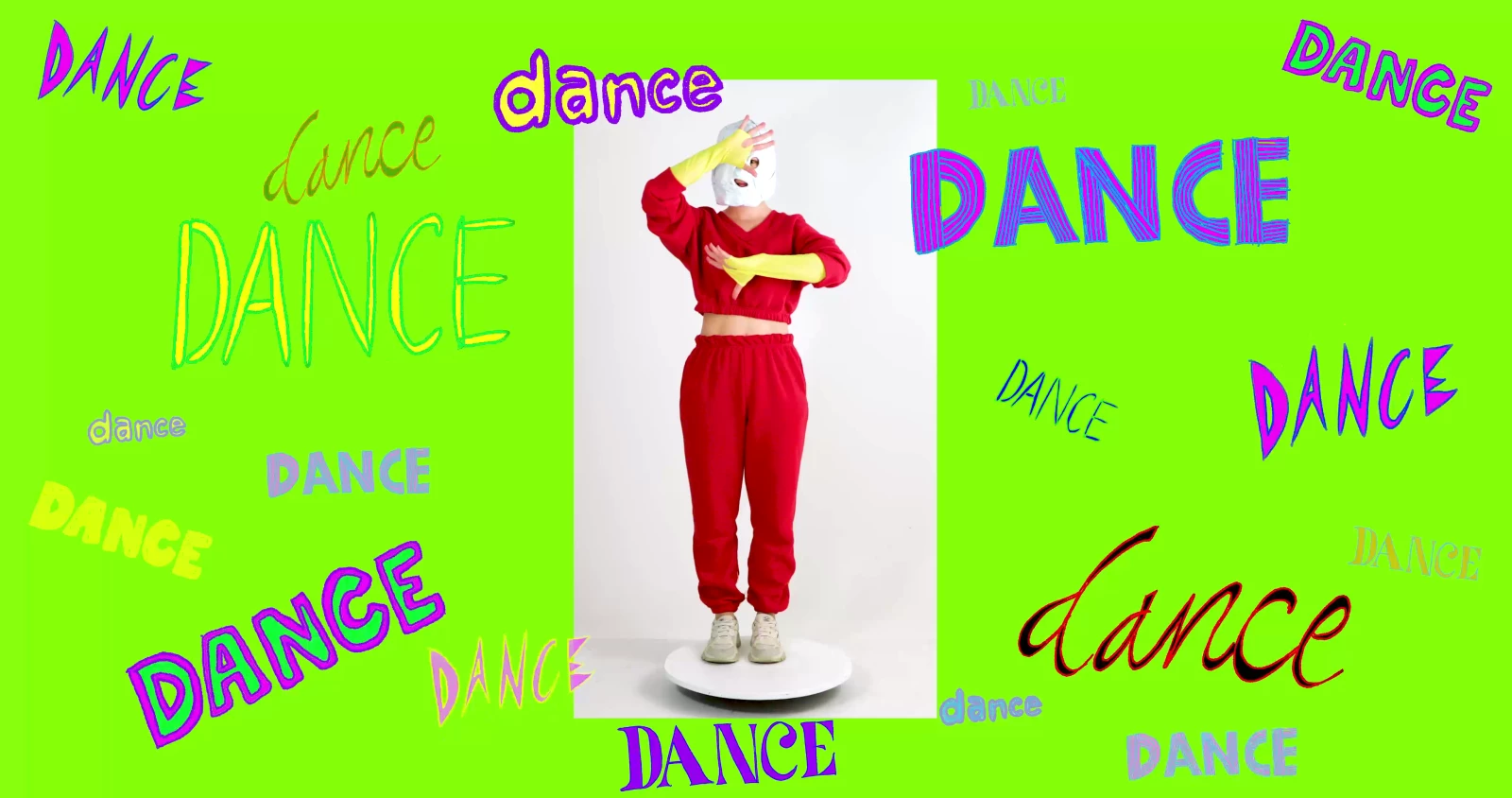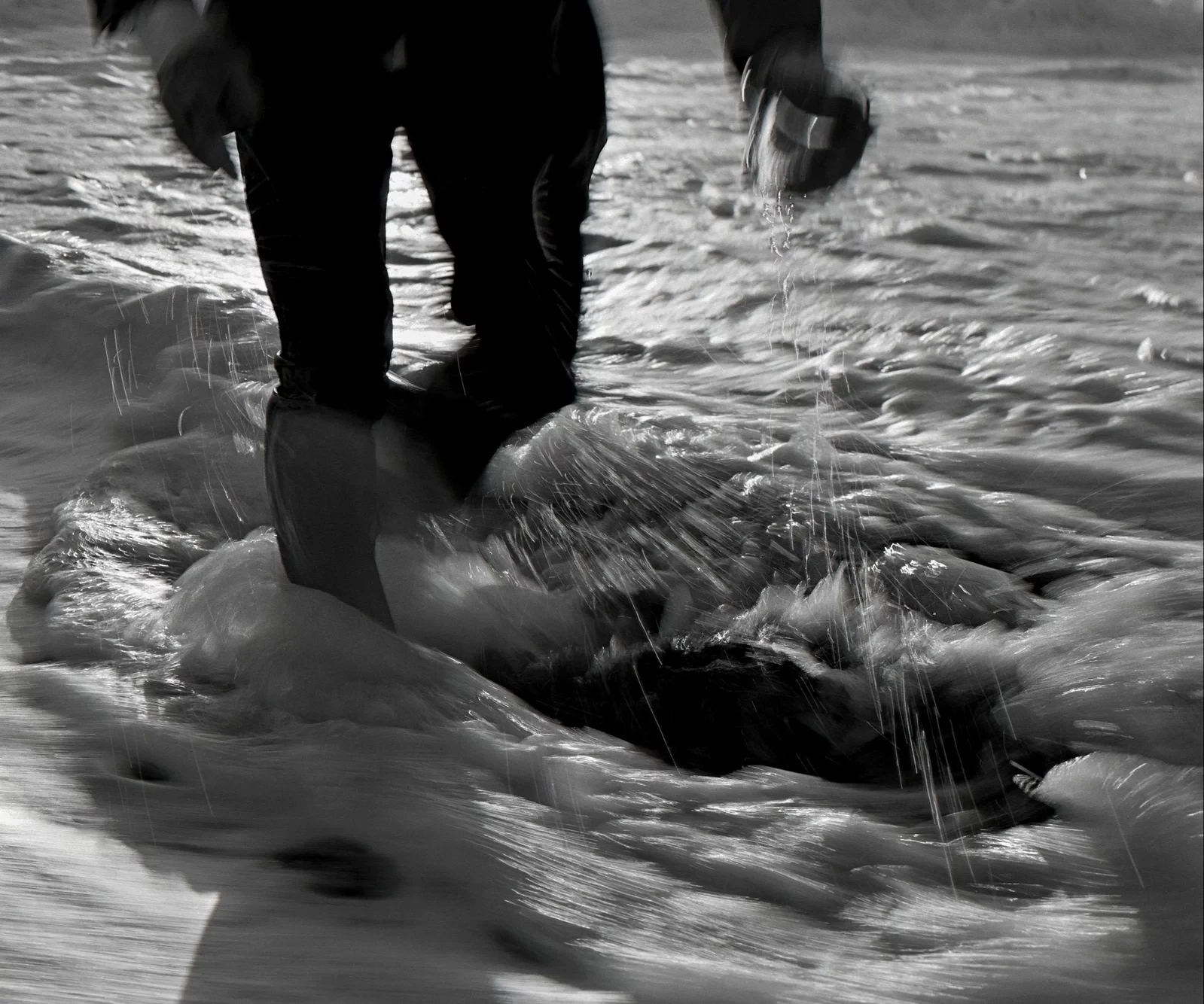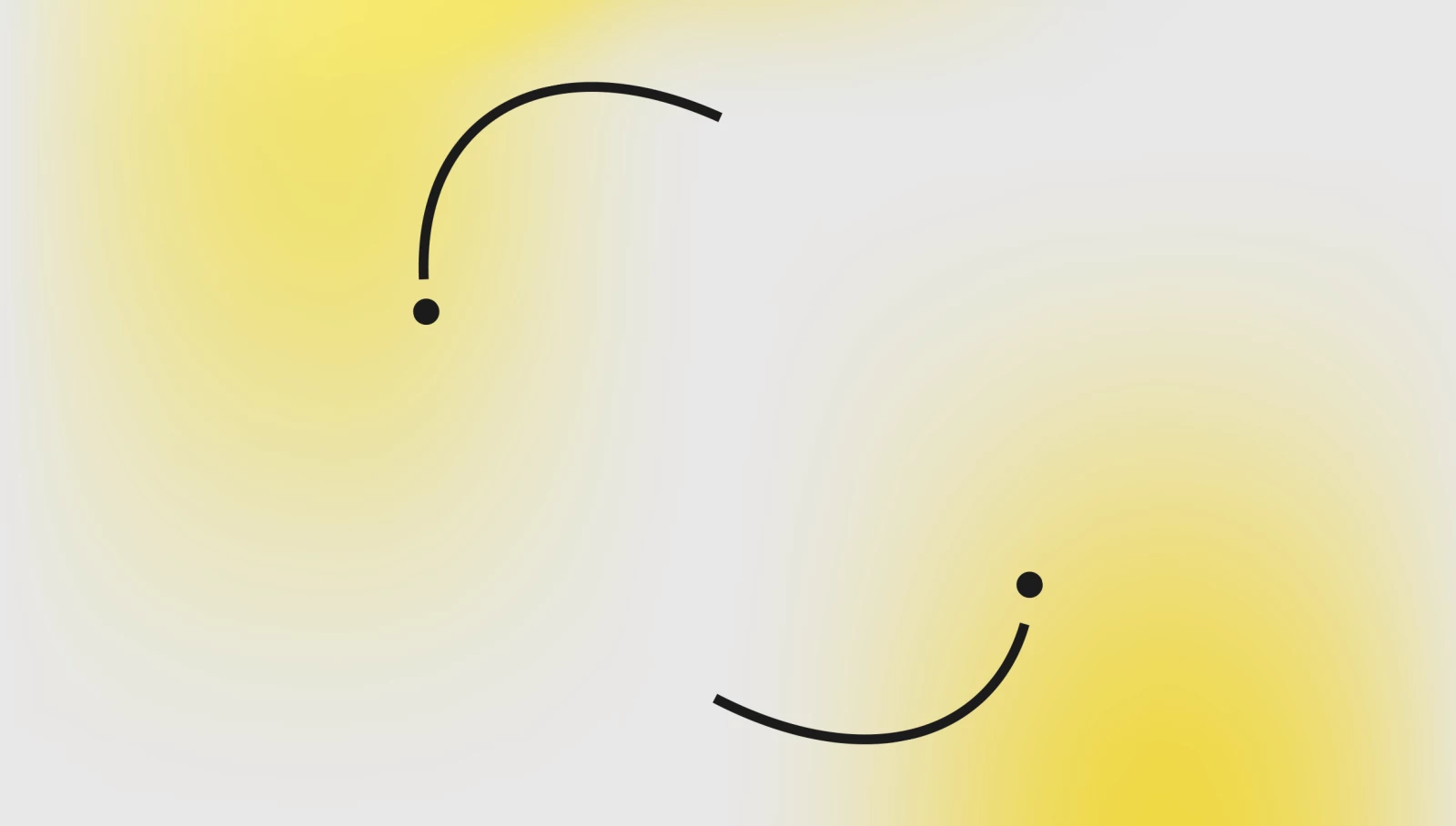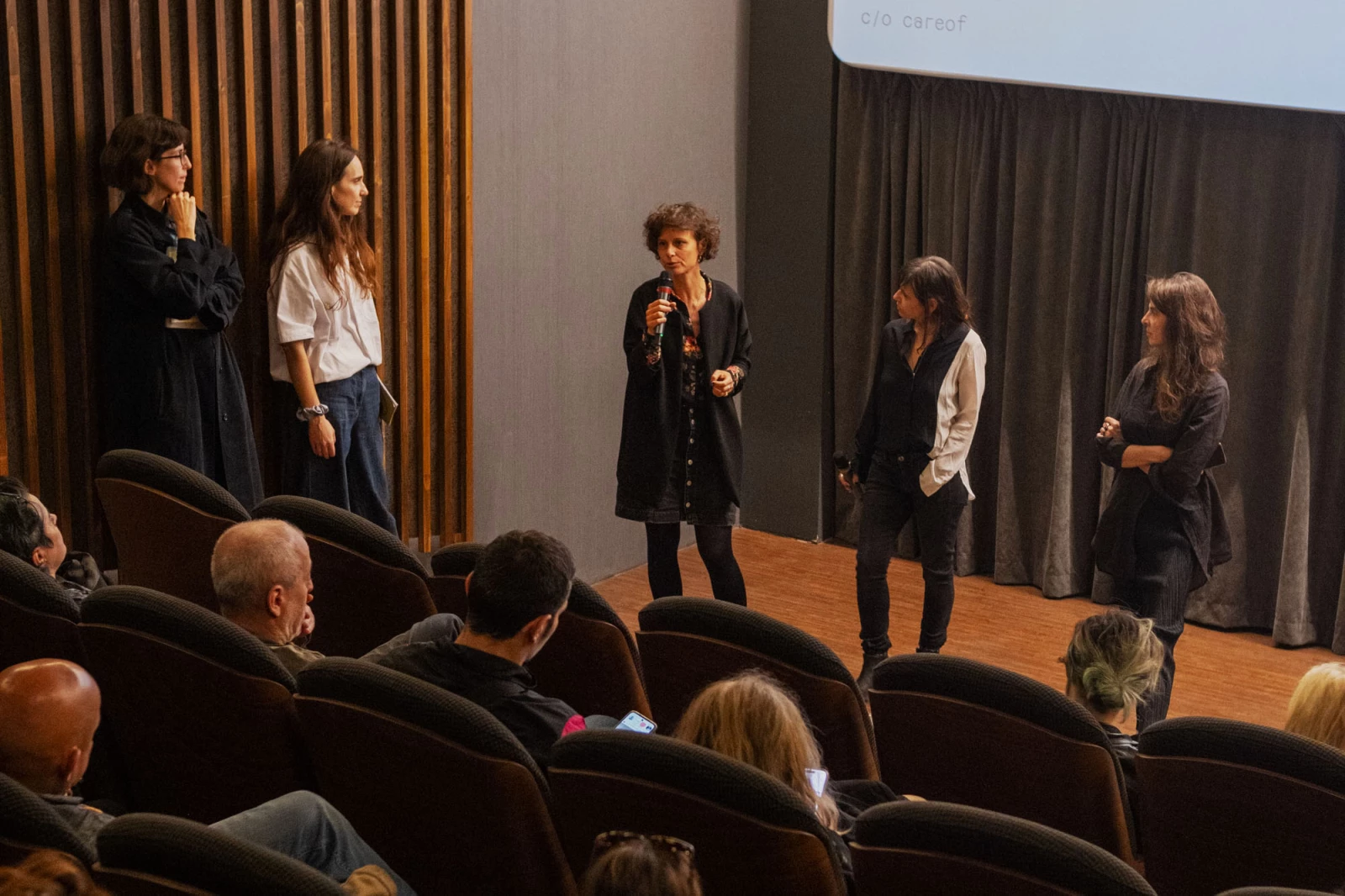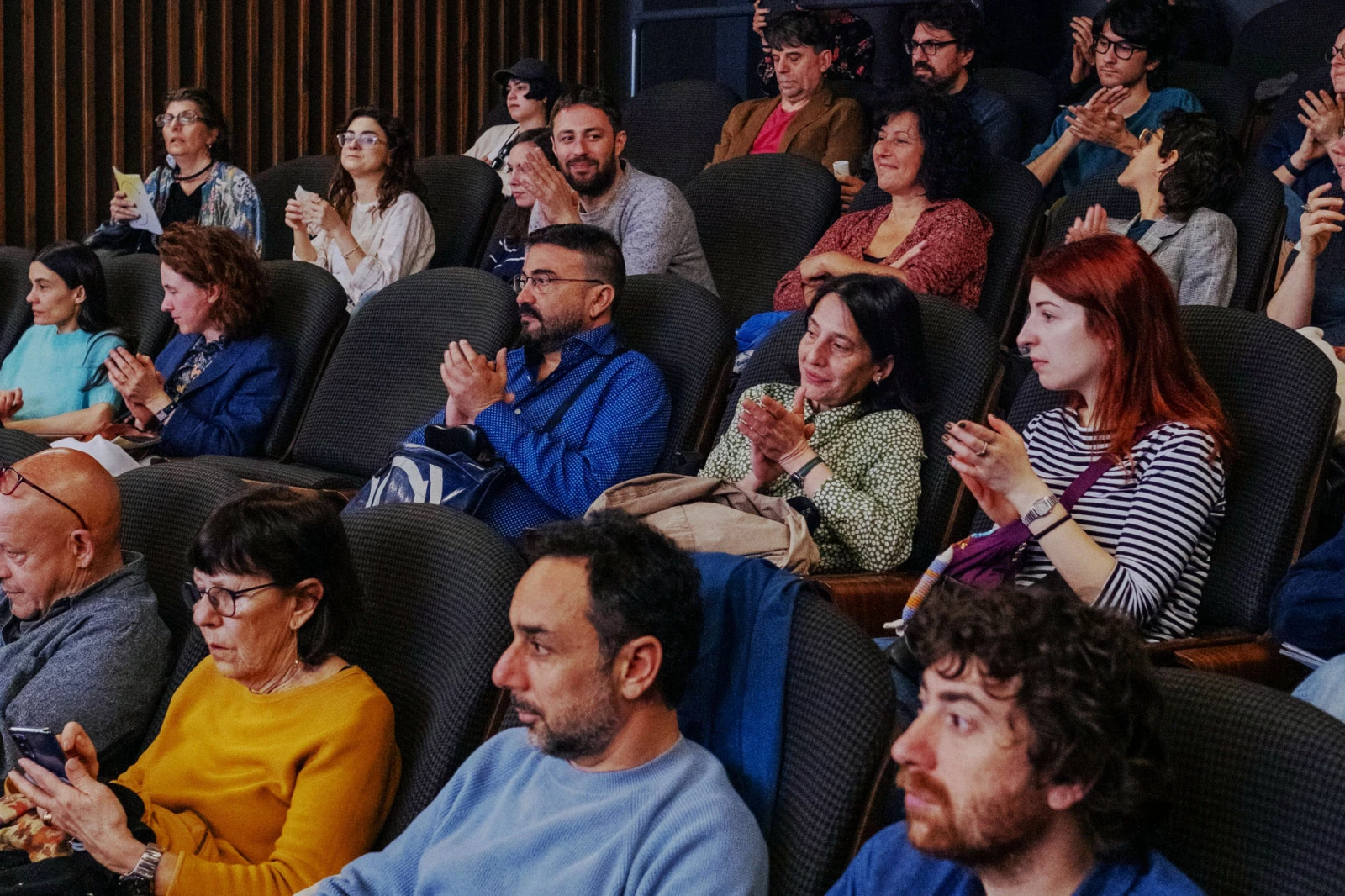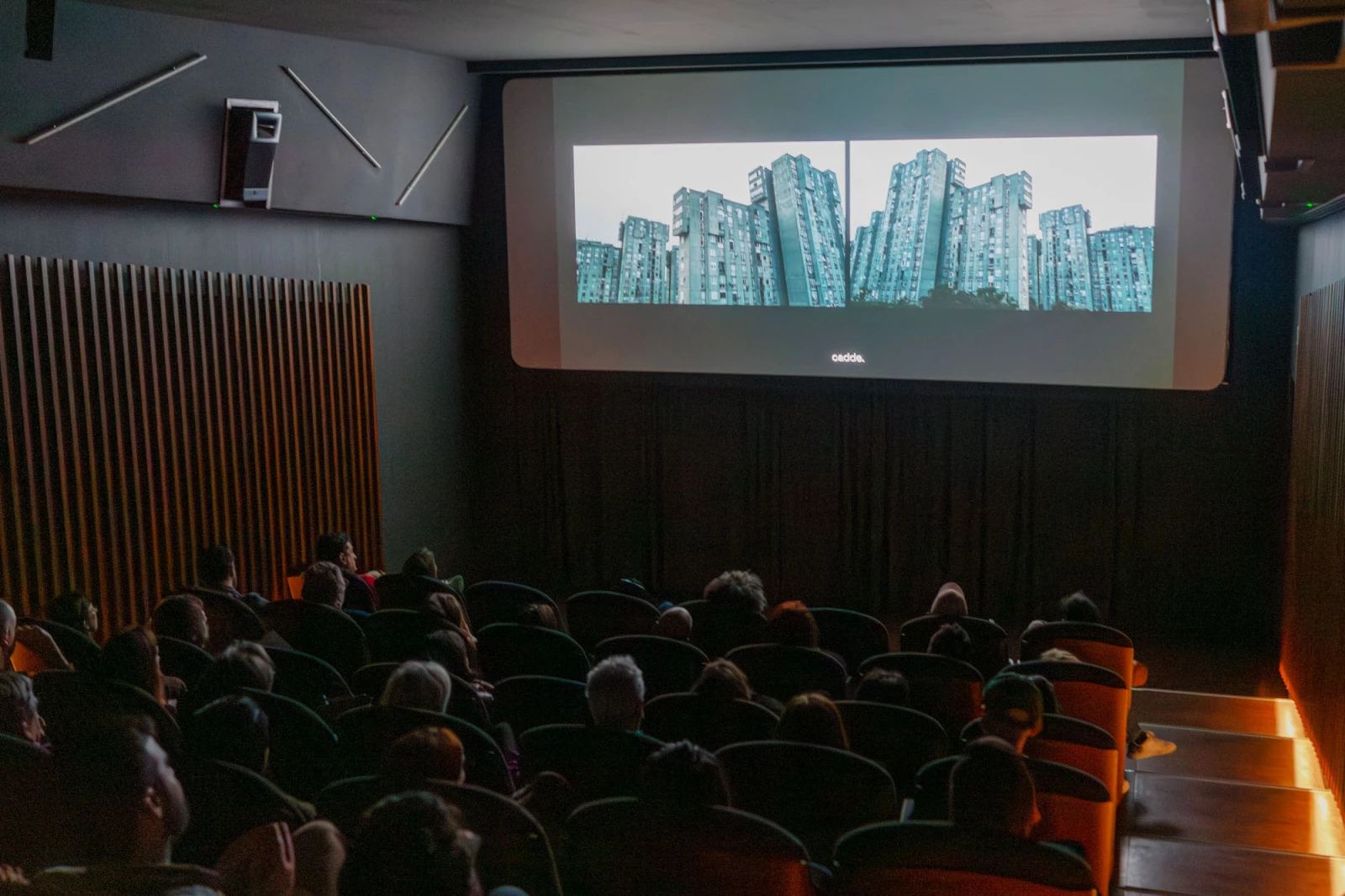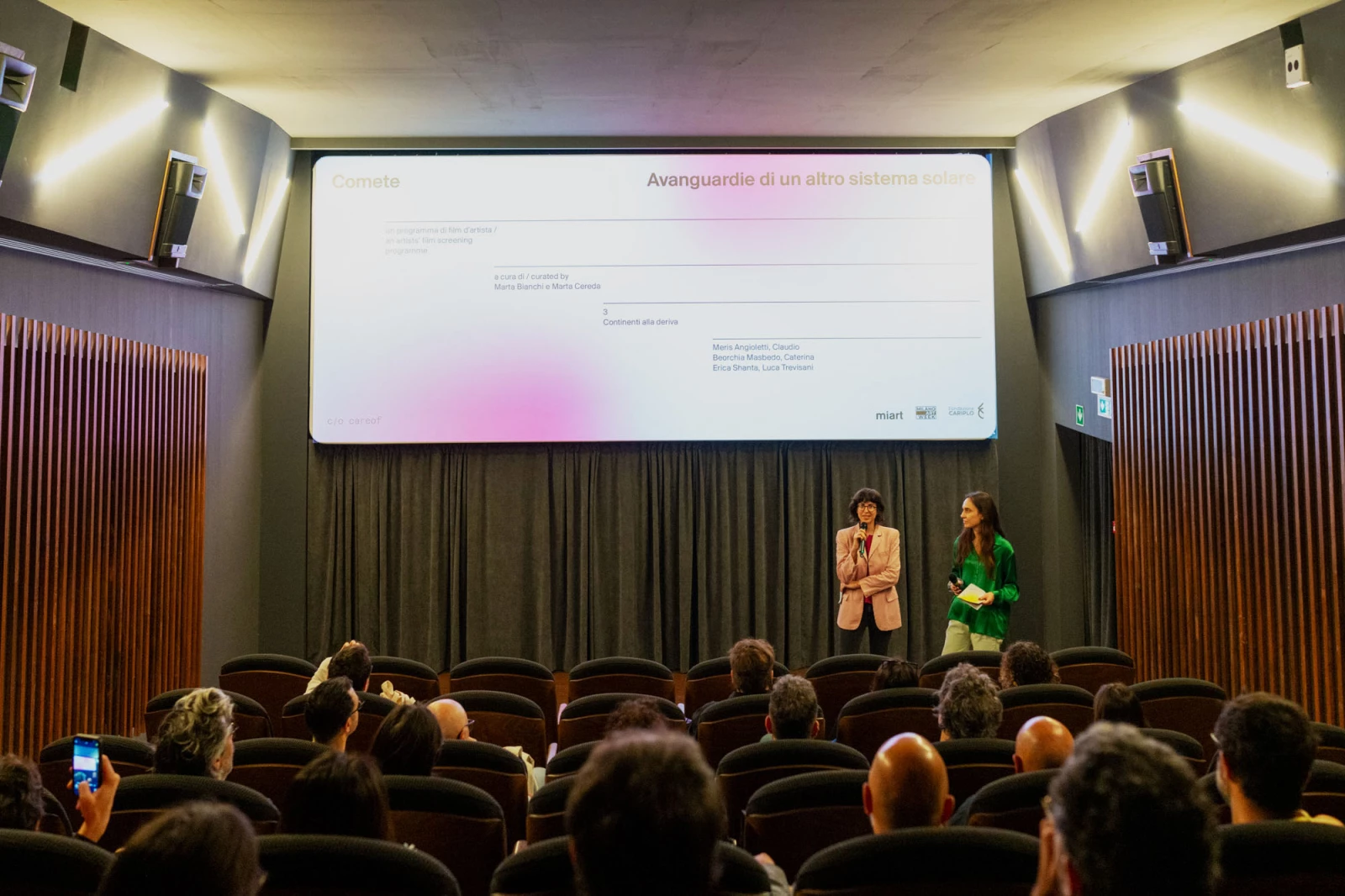Comete. Avanguardie di un altro sistema solare
12 - 13 - 14.04.2024, h 10.15
Anteo Palazzo del Cinema, Milano
Curated by Marta Bianchi and Marta Cereda
On the occasion of Milano Art Week 2024, Careof presents “Comete. Avanguardie di un altro sistema solare”, a program of screenings of artists' film works, which inaugurates a virtuous relationship with miart. The project is curated by Marta Bianchi and Marta Cereda, realized in collaboration with the Comune di Milano and with the support of Fondazione Cariplo.
On the mornings of Friday 12, Saturday 13, and Sunday 14 April 2024, with an opening earlier than that of the fair, Anteo Palazzo del Cinema becomes the space to enjoy video works in an intimate and curated setting, allowing for the appreciation of this medium, also through direct interaction with some of the artists present in the theater.
The title of the project is linked to the theme of miart 2024 “no time no space” and uses the metaphor introduced by Franco Battiato in the song of the same name to identify in the selected artists and their production the “avanguardie di un sistema solare”. The works presented are forerunners and revealers of themes that are at times already visible but neglected, at times still to be brought to light — they are flashes that illuminate and awaken consciousness, sometimes lingering longer, sometimes only for an instant.
Three days, three themes:
12 April 2024, 10:15 a.m.
“Civiltà sepolte: una riflessione su storia e società”
with works by Fatima Bianchi, Jacopo Miliani, Beatrice Marchi, Valentina Medda, Ugo La Pietra
13 April 2024, 10:15 a.m.
“Viaggiatori anomali: una riflessione sull’identità”
with works by Rä di Martino, Corinne Mazzoli, Liliana Moro, Adrian Paci, Driant Zeneli
14 April 2024, 10:15 a.m.
“Continenti alla deriva: una riflessione sul territorio, sul paesaggio, sul rapporto tra umano e naturale”
with works by Meris Angioletti, Claudio Beorchia, Masbedo, Caterina Erica Shanta, Luca Trevisani
Admission is free, subject to availability.
“Civiltà sepolte: una riflessione su storia e società” - 12.04.2024, ore 10.15
Fatima Bianchi, “Les dissidentes”, 2024, 25’, video, color, sound, courtesy of the artist
Three mothers are exiled to an island under constant surveillance. They are forced into hard labor for daring to rebel against the conventions of motherhood. Their inner voices expose the struggles they face, often considered taboo by society. “Les dissidentes” was created with the support of Italian Council (11th edition, 2022).
Fatima Bianchi (Como, 1981; lives in Marseille) is a filmmaker whose work lies between creative documentary and experimental cinema. Her films and installations have been exhibited at festivals and galleries including: Visions du Réel (Nyon, Switzerland); Cinéma Vérité (Tehran, Iran); Open City Documentary (London, UK); Mediterranea 18 Young Artists Biennale (Tirana, Albania); Centre d'Art Contemporain (Briançon, France). With the work Notturno, she was selected for the Critics’ Week at the 73rd Venice International Film Festival. Among the awards received: Italian Council (11th edition, 2022), ArteVisione (2020), Filmmaker Festival (2014).
Jacopo Miliani, “La discoteca”, 2021, 25’, video, color, sound, courtesy Centro per l’Arte Contemporanea Luigi Pecci, Prato
In a dystopian future, authority exercises power by forbidding emotional expression and, in particular, dancing. The punishment is being turned into roses—symbols of perfection and entities suspended between life and death. For Ermes, whose partner has recently become a flower, and Didi, this is no ordinary day: they have been invited to the Babylon discotheque to undergo a strict ritual aimed at reproduction. On the dance floor, Ermes and Didi discover, through gestures and memories, the possibility of a different and unexpected transformation. “La discoteca” was created with the support of Italian Council (8th edition, 2020).
Jacopo Miliani (Florence, 1979; lives in Milan) is an artist whose work spans visual arts (installation, video, photography) and body practices, focusing particularly on performance as a research methodology. His investigation is also expressed through interdisciplinary projects such as workshops and independent publishing.
Beatrice Marchi, “When Katie Fox met the Evil Turtle”, 2022, 10’14’’, video with digital animation, color, sound, courtesy of the artist and SANDY BROWN, Berlin
In “When Katie Fox met the Evil Turtle”, two characters, Katie Fox and the turtle Ci-uffa, turn evil. The former out of a desire for popularity, the latter following an accident that disfigured her. A chance encounter leads them to a test of strength—a sort of competition to determine who is truly more wicked. On this occasion, Katie Fox rediscovers guilt and rejoices in the fact that repentance will put her back on the path to success. The work uses mixed techniques, including 2D animation.
Beatrice Marchi (Gallarate, 1986; lives in Berlin) explores identity roles within group dynamics to challenge gender stereotypes and moral and professional definitions, using video, performance, and painting. Her work has been presented in solo and group exhibitions at various institutions, including: Museion (Bolzano, 2023); Pogo Bar, KW (Berlin, 2023); MAXXI (L’Aquila, 2022); Fondazione Prada (Milan and Tokyo, 2022); Kunstquartier Bethanien (Berlin, 2021); Istituto Svizzero (Milan, 2021); MACRO (Rome, 2021). She is the winner of ArteVisione (2023).
Valentina Medda, “The Last Lamentation”, 2024, 13', video, color, sound, courtesy of the artist
“The Last Lamentation” is a funeral ritual for the Mediterranean, conceived here as a place of waiting and passage, embodiment of an absence, repository of corpses and a corpse in itself. The work recounts the sea’s tragedy through a hypnotic vocal and choreographic score that reinterprets ritual codes in contemporary and abstract forms. The powerful presence of twelve mourning women, dressed in black and standing by the sea, makes the absence of the dead more tangible and gives voice to their silent cries. “The Last Lamentation” was created with the support of Italian Council (11th edition, 2022).
Valentina Medda (Cagliari, 1975; lives in Bologna) is an interdisciplinary artist whose work has been exhibited in various national and international contexts. The Last Lamentation was presented in a solo exhibition at MAN (Nuoro) and at the Monumental Cemetery of the Certosa (Bologna), promoted by MamBo. She has held residencies at, among others: BAR (Beirut, Lebanon); Cité des Arts (Paris, France); Flux Factory (New York, USA). Among the awards received: PERFORM EUROPE, Italian Council (11th edition, 2022), and Stronger Peripheries - Southern Coalition.
Ugo La Pietra, “Per oggi basta!”, 1974, 14’, video, sound, courtesy of the artist and Archivio Fondazione Cineteca Italiana
"The possibility of stepping outside imposed schemes clashes daily with those who control them." The film expresses, on an autobiographical level, the difficulties faced by the aesthetic operator each time they attempt to take paths outside the “system.” This is represented through the design, realization, and use of a device (Il Commutatore, 1969) with which it is possible to overcome urban physicality and project oneself into “the void.” This “projection” is abruptly interrupted by an authoritarian phrase: “Ugo La Pietra per oggi basta!”, which is visually echoed by a cultural article in a major newspaper that blocks the process and causes everything to collapse, forcing the protagonist to retrieve the device and return it to the confinement of his studio, unable to use it.
Ugo La Pietra (Bussi sul Tirino, 1938; lives in Milan) graduated in Architecture from the Politecnico di Milano and, since 1960, has conducted research in the visual arts and music. Artist, architect, designer, and above all, a researcher in the broad field of communication systems. His work is known through exhibitions, the direction of various publications, and teaching in Art Institutes and Universities. His works are housed in major international museums.
“Viaggiatori anomali: una riflessione sull’identità” - 13.04.2024, ore 10.15
Corinne Mazzoli, “How to Customise Yourself”, 2021, 3’44’’, video, color, sound, courtesy of the artist
The video adopts the tutorial format as a narrative style and draws inspiration from conspiracy theories that have gone viral in recent years. It shows how to use accessories and clothing inspired by conspiracist symbolism to create a character. Black Cube, Reptilian, Eye, Holy Fire, WiFi—elements found across social media and forums—are transformed by the artist into wearable objects, as symbols of conspiracy theories. “How to Customise Yourself” has been part of the MA*GA (Gallarate) collection since 2021 and the Galleria Nazionale d’Arte Moderna e Contemporanea della Repubblica di San Marino since 2022.
Corinne Mazzoli (La Spezia, 1984; lives in Venice) is a visual artist whose research focuses on the analysis of the female body in relation to its representation on social media. In particular, she explores the relationship between identity constructs, gender stereotypes, and online representation. She is a PhD candidate at the Università degli Studi di Milano-Bicocca, where she investigates the educational process as an artistic practice. She is a founding member of AWI Art Workers Italia. Her immersive project “The Gossips' Chronicle”, produced by Careof, won the 8th Biennale College Cinema Immersive and will be presented at the 81st Mostra Internazionale d'Arte Cinematografica di Venezia (2024).
Liliana Moro, “La solida avventura”, 1993, 5’, video, color, sound, courtesy of the artist and Rodeo Gallery
The song “Dancing” by Paolo Conte is the starting point from which the artist constructs this narrative: it speaks of dance and dancers, of body gestures and movements through space, but also of the feelings that drive us to follow our passions. A text that Liliana Moro has interpreted as a declaration of the artist's intent.
Liliana Moro (Milan, 1961; lives in Milan) founded, together with other artists, the space via Lazzaro Palazzi, active from 1989 to 1993. In her work, she uses sound, words, sculptures, objects, and performance to compose a world that stages a reality that is both raw and poetic. She has exhibited in major exhibitions and institutions, including: Documenta IX (Kassel, Germany, 1992); Aperto XLV Biennale di Venezia (Venice, 1993); Castello di Rivoli (Turin, 1994); Moderna Museet (Stockholm, Sweden, 1998); PS1 (New York, USA, 1999); De Appel (Amsterdam, Netherlands, 1999); MamBo (Bologna, 2011); MART (Rovereto, 2012); MAXXI (Rome, 2016).
Adrian Paci, “Prova”, 2019, 10’16’’, video, color, sound, courtesy of the artist and kaufmann repetto, Milan and New York, Peter Kilchmann Gallery, Zurich and Paris
The backdrop is the concrete skeleton of an unfinished building, at the center of which stands a group of men seemingly waiting in silence. They are unemployed people looking for work in Shkodër, Albania. Throughout the night, from dusk to dawn, the protagonists look at each other, smile, or fall asleep standing. The perceived silence is occasionally interrupted by the words “Prova, prova” (Test, test), uttered as if during a soundcheck. The camera shifts to follow a group of horses and dogs running through the streets, as if mocking the immobility of humans.
Adrian Paci (Shkodër, Albania, 1969; lives in Milan) has held solo exhibitions in Italian and international institutions, including: Haifa Museum of Art (Haifa, Israel, 2022); Salzburger Kunstverein (Salzburg, Austria, 2019); National Gallery of Art (Tirana, Albania, 2019); Museo Novecento (Florence, 2017); Chiostri di Sant’Eustorgio (Milan, 2017); MAXXI (Rome, 2015); Trondheim Kunstmuseum (Trondheim, Norway, 2014); Röda Sten Konsthall (Gothenburg, Norway, 2014); MAC, Musée d’Art Contemporain de Montréal (Montreal, Canada, 2014). He participated in the Biennale di Malta (2024), the 14th Biennale di Architettura di Venezia (2014), the 4th Biennale di Salonicco (2013), the Biennale de Lyon (2009), the 15th Quadriennale di Roma—where he won first prize (2008), the 15th Biennale of Sydney (2006), the Biennale d’Arte di Venezia (1999 and 2005), and Manifesta (1998 and 2022).
Rä di Martino, “Moonbird”, 2022, 25’, video, color, sound, courtesy of the artist
Moonbird is a dreamlike creature that appears and animates the villa where a man has chosen to isolate himself from the world—a botanist who lives immersed in his objects, in his immense house that traps and immobilizes him. A trivial event shatters this condition and leads the protagonist out of his darkness made of conventions and monotony. Here, in a state of dreamlike suspension, Moonbird is born—what could not penetrate reality succeeds through the unconscious.
Rä di Martino (Rome, 1975; lives in Rome) has exhibited in numerous institutions, including: Tate Modern (London, UK, 2007 and 2013); PS1 (New York, USA, 2006 and 2007); Palazzo Grassi (Venice, 2008 and 2016); Quadriennale at Palazzo delle Esposizioni (Rome, 2008 and 2016); La Biennale di Venezia (2007); Fondazione Sandretto Re Rebaudengo (Turin, 2012); MACRO (Rome, 2006); MAXXI (Rome, 2014 and 2017); Museion (Bolzano, 2014 and 2015); NIMK (Amsterdam, Netherlands, 2007); MCA (Chicago, USA, 2009); MALI (Lima, Peru, 2013). Her first feature film Controfigura (2017) premiered at the Mostra Internazionale d'Arte Cinematografica della Biennale di Venezia. Among the awards received: Italian Council (IV edition, 2018), Lio Capital Art Prize (2020).
Driant Zeneli, “The Valley of the Uncanny Lovers – Chapter I - The Leaf”, 2023, 7’12’’, video, color, sound, courtesy of the artist
“The Leaf” is the first chapter in a new trilogy by Driant Zeneli, titled “The Valley of the Uncanny Lovers”, a valley surrounded by concrete mountains and home to various species. This is the story of Tinny, a leaf that falls in love with a flower and does everything possible to detach from the tree and reach her. Only upon approaching, Tinny discovers that the flower is actually a lifeless lithium battery. The Leaf was created in the area of New Belgrade, Bežanijski Blokovi, thanks to the collaboration with a group of students from the Faculty of Dramaturgy in Belgrade, in particular with Mitar Milecevic.
Driant Zeneli (1983, Shkodër, Albania; lives in Turin) is an artist whose work focuses on redefining the concepts of failure, utopia, and dream, as elements that open up possible alternatives. In 2019 and 2011, he represented the Albanian Pavilion at the 58th and 54th Esposizione Internazionale d'Arte di Venezia (with a solo and a group show, respectively). Among the awards received: Premio MOROSO (2017); Premio Giovane Artista Europeo Trieste Contemporanea (2009); Premio Internazionale di Arte Contemporanea Onufri (Tirana, Albania, 2008). He was the artistic director of Mediterranea 18, Biennale dei Giovani Artisti d'Europa e del Mediterraneo (Tirana and Durrës, Albania, 2017). He is a co-founder of Harabel.
“Continenti alla deriva: una riflessione sul territorio, sul paesaggio, sul rapporto tra umano e naturale” - 14.04.2024, ore 10.15
Masbedo, “Togliendo tempesta al mare”, 2007, 3’22’’, video, color, sound, courtesy of the artists
A man in a suit and tie navigates the sea waters with a glass in his hand, while a storm rages endlessly. His intent is absurd and impossible: in an unwavering back-and-forth, he collects the foam of the waves in the glass, then stumbles and falls on the shore, is swept away again, but each time resolutely rises to complete his mission. He is an “employee of the mind,” attempting, through an unattainable mission, to give meaning to his existence.
MASBEDO is an artistic duo formed by Nicolò Massazza (1973) and Iacopo Bedogni (1970). Collaborating since 1999, they currently live in Milan and Piacenza. In their work, they continuously explore—and thus blend—various artistic languages: video, installation, cinema, performance, avant-garde theater, and sound design. Recently, they have identified the relationship between cinema and art as a privileged area of investigation, approached with sensitivity to both socio-anthropological and intimate, poetic elements. Their work is included in public collections at MART (Rovereto); Fondazione Merz (Turin); GAM (Turin); MACRO (Rome); DA2 (Salamanca, Spain); CAAM (Las Palmas, Spain); MAXXI (Rome); Musei Reali di Torino; Fondazione ICA (Milan); Museo Salinas (Palermo); GAMeC (Bergamo).
Caterina Erica Shanta, “En Ausencia”, 2023, 26’37’’, video, color, sound, courtesy of the artist
In Mexico, potable water is private property, and access to it is regulated by market laws. In this context, where availability is not guaranteed, the issue becomes an even more political discourse, implying a revision of the entire urban fabric of Mexico City. “En Ausencia” is built on the narrating voices of individuals who responded to an open call published by the artist while in the city, asking them to recount dreams where water was the central, recurring element.
Caterina Erica Shanta (Landstuhl, Germany, 1986; lives in Pordenone) works primarily in moving-image and contemporary art with various media, producing films based on private archives and collective film-making practices. Her works have been shown at institutions such as: Ca' Pesaro (Venice); GAMeC (Bergamo); Careof (Milan); Fondazione Bevilacqua La Masa (Venice); MamBo (Bologna). She has participated in numerous film festivals, including: Oberhausen Film Festival (Germany); Lo Schermo dell’Arte (Florence); Filmmaker Film Festival (Milan); Trento Film Festival (Trento). Among the awards received: “MUFOCO Italia è un desiderio,” Italian Council (10th edition, 2021).
Luca Trevisani, “38° 11’ 13.32” N 13° 21’ 4.44” E44° 24’ 27.4” N 8° 55’ 60.0” E”, 2018, 9’41’’, video, color, sound, courtesy of the artist, Pinksummer Contemporary Art (Genoa) and Galerie Mehdi Chouakri (Berlin)
This film is an exploration of the Addaura cave complex and the images it hosts: a series of rock engravings dating back to the late Epigravettian and Mesolithic periods. These are among the oldest engravings known to us, around 14,000 years old, in which humans first represented a ritual, illustrating group activity, society, and feasting. Whether depicting an apotropaic rite, erotic shamanism, or a sensational historical forgery, these inscriptions are a molecular mystery beyond our comprehension—they are the cartography of the desire to be human and a collective future to remember.
Luca Trevisani (1979, Verona; lives in Milan) is a visual artist whose multidisciplinary practice has been exhibited internationally in museums and institutions including: Biennale of Sydney (Sydney, Australia); Manifesta 7 (Trentino Alto Adige, 2008); Biennale di Architettura di Venezia (Venice); Museum of Contemporary Art Tokyo (Tokyo, Japan); Kunsthalle Wien (Vienna, Austria); Magasin (Grenoble, France); MAXXI (Rome); Museo del Novecento (Milan); GAM (Turin). His research spans sculpture and video and crosses disciplines such as performance art, graphic design, experimental film, and architecture. Trevisani has authored texts for art magazines and newspapers and has published several books, including: The Art of Folding for Young and Old (Cura Books, 2012); Water Ikebana (Humboldt Books, 2014); Grand Hotel et des Palmes (NERO Editions, 2015); Via Roma 398. Palermo (Humboldt Books, 2018); Walking Loaves (NERO, 2023).
Meris Angioletti, “Il paradigma indiziario”, 2009, 13’50’’, video, color, sound, courtesy of the artist
Crypts, wells, tunnels, and canals form an unknown Milan: from the famous undergrounds of Castello Sforzesco to the more modern bunkers of Via Mecenate, the air-raid shelters of Via Adriano and the Central Station, through catacombs and secret passages. It’s an unexplored, secret, and mystery-laden Milan. The artist explores these places without disregarding the people who once inhabited them. The architectural structures and their associated stories may be quite different, but what unites them is the journey through time, memory, and an almost archaeological reconstruction of lived experience. The underground thus becomes a mental image, a memory, a projection.
Meris Angioletti (Bergamo, 1977; lives in Paris) is an artist and researcher affiliated with the APESA doctoral school, Institut ACTE, Paris 1 Panthéon‑Sorbonne. Rooted in art and cinema history—especially early abstraction—as well as cognitive science, psychology, and esotericism, her works probe the mechanisms of perception, memory, the body, and vocal emission. Among her recent exhibitions: Anozero – Bienal de Coimbra (Coimbra, Portugal, 2021–2022); 22. Prix – Bonaventure, Fondation d’Entreprise Pernod Ricard (Paris, France); CND (Pantin, France); CRAC (Alsace, France); FRAC Champagne‑Ardenne (Reims, France); Centre Pompidou (Paris, France); 30th Biennale di São Paulo (São Paulo, Brazil); 54th Biennale d’Arte di Venezia (Venice).
